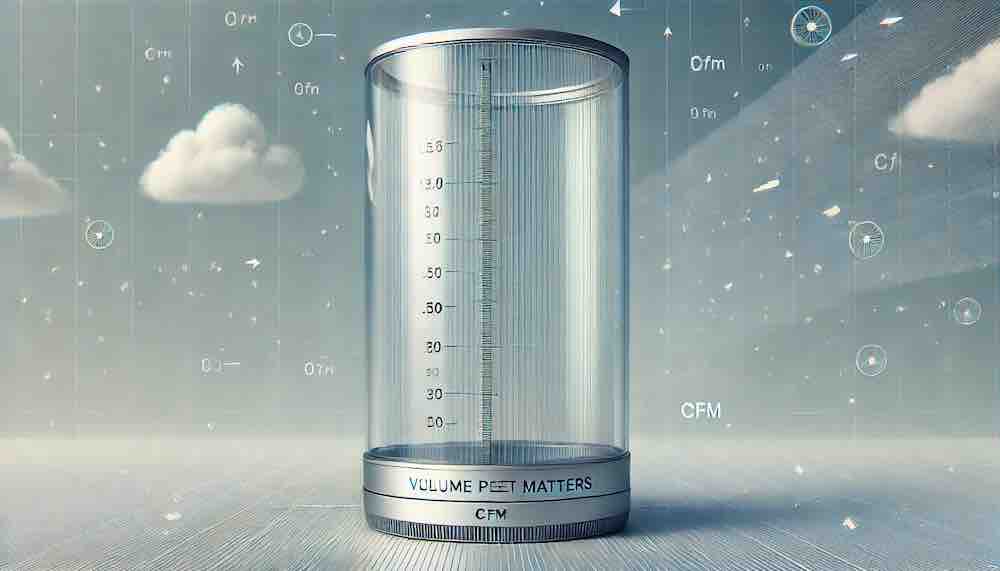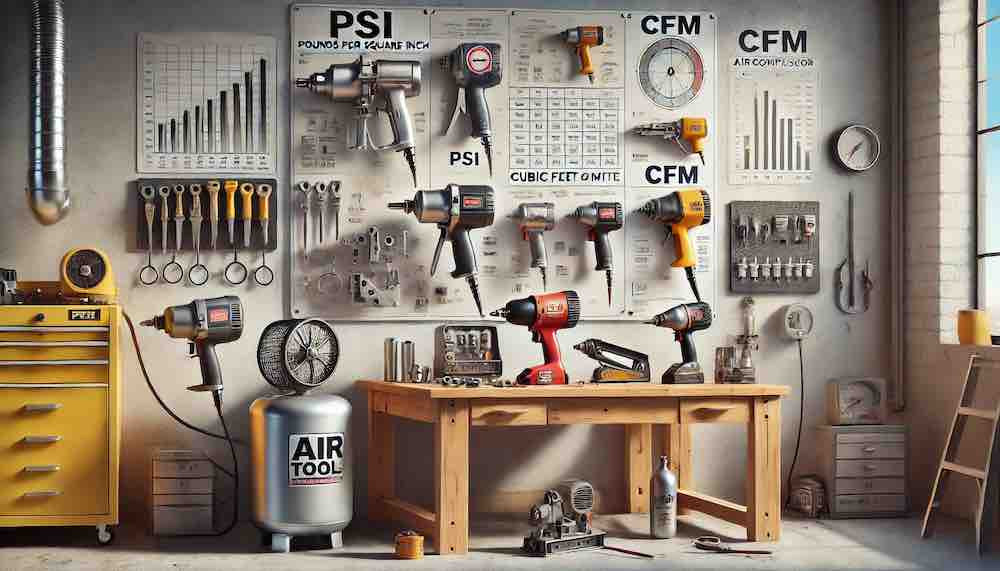Air Tool Efficiency: PSI vs. CFM Explained
Efficiency is key in pneumatic tools. Whether you're a professional contractor, an industrial worker, or a DIY enthusiast, understanding the relationship between PSI (Pounds per Square Inch) and CFM (Cubic Feet per Minute) is crucial for maximizing the performance of your air tools. In this comprehensive guide, we'll delve into the intricacies of PSI and CFM, their roles in air tool efficiency, and how to optimize your setup for peak performance.
Key Takeaway
Understanding the relationship between PSI and CFM is crucial for air tool efficiency. Proper sizing, regular maintenance, and system optimization can significantly improve performance and reduce costs. Always match your air compressor's output to your tools' requirements for optimal results.
Understanding PSI: The Force Behind Your Air Tools
PSI, or Pounds per Square Inch, is a measure of pressure. In the context of air tools, it represents the force at which compressed air is delivered to your tool. Think of PSI as the "strength" of the air supply. Most air tools operate within a specific PSI range, typically between 70 and 120 PSI.
Key points about PSI:
- A higher PSI doesn't always mean better performance
- Tools have specific PSI requirements
- Exceeding recommended PSI can damage tools
The Role of CFM: Volume Matters

While PSI is important, CFM, or Cubic Feet per Minute, is equally crucial. CFM measures the volume of air that your compressor can deliver per minute. It's the "quantity" of air available to your tools. CFM requirements vary widely depending on the tool and its application.
Essential aspects of CFM:
- Determines how long a tool can operate continuously
- Affects the number of tools that can run simultaneously
- Usually, the limiting factor in air tool performance
The Interplay Between PSI and CFM
To truly understand air tool efficiency, we must examine how PSI and CFM work together. Imagine PSI as the force pushing water through a hose, while CFM is the amount of water flowing. For optimal performance, you need both adequate pressure (PSI) and volume (CFM).
Balancing Act: Finding the Sweet Spot
Finding the right balance between PSI and CFM is essential for efficient operation. Here's how they interact:
- Increasing PSI can compensate for low CFM to some extent
- Higher CFM allows for longer operation and multiple tool use
- Optimal efficiency occurs when both PSI and CFM meet tool requirements
Calculating Your Needs: A Practical Approach
To determine the ideal PSI and CFM for your setup, follow these steps:
- List all your air tools and their individual PSI and CFM requirements
- Identify the tool with the highest CFM demand
- Add 30% to this CFM value to account for future needs and inefficiencies
- Ensure your compressor can deliver this CFM at the required PSI
Optimizing Your Air Tool System
Now that we understand the basics let's explore ways to optimize your air tool system for maximum efficiency:
- Proper Compressor Sizing Invest in a compressor that can handle your CFM requirements at the necessary PSI. Undersized compressors lead to frequent cycling and reduced tool performance.
- Minimize Pressure Drop: Use appropriately sized air hoses and fittings to reduce pressure loss. Shorter hoses with larger diameters maintain pressure better over distance.
- Regular Maintenance: Keep your compressor and tools in top condition. Clean or replace air filters regularly, drain tank moisture, and lubricate tools as recommended.
- Pressure Regulation Use pressure regulators to fine-tune PSI for each tool, preventing over-pressurization and improving efficiency.
- Leak Detection and Repair: Regularly inspect your system for leaks. Even small leaks can significantly impact efficiency and increase energy costs.
Real-World Applications: PSI and CFM in Action
Let's examine how PSI and CFM affect different air tools:
- Air Impact Wrench
- Requires high PSI (90-120) for torque
- Needs substantial CFM (3-8) for continuous operation
- Paint Sprayer
- Operates at lower PSI (30-50)
- Demands high CFM (6-12) for consistent spray pattern
- Air Sander
- Moderate PSI requirement (90-100)
- High CFM demand (6-15) for smooth operation
- Pneumatic Nailer
- High PSI (70-120) for driving force
- Low CFM (0.5-2.5) due to intermittent use
Understanding these requirements helpsyou select the suitable compressor and tools for your specific needs.
Energy Efficiency and Cost Savings
Optimizing PSI and CFM improves tool performance and leads to significant energy savings. An efficient system:
- Reduces compressor runtime
- Lowers electricity costs
- Extends equipment lifespan
- Minimizes maintenance needs
Invest in quality equipment and proper setup for long-term savings.
Future Trends: Smart Air Systems
The future of air tool efficiency lies in intelligent, connected systems. Emerging technologies include:
- IoT-enabled compressors that adjust PSI and CFM in real-time
- AI-driven predictive maintenance
- Energy recovery systems that capture and reuse waste heat
Stay informed about these advancements to future-proof your air tool setup.
FAQs:
- Q: Can I use a tool that requiresa higher CFM than the one provided by my compressor? A: While possible for short durations, it's not recommended as it can lead to poor performance and potential damage to both the tool and compressor.
- Q: Is it better to have higher PSI or higher CFM? A: Both are important, but sufficient CFM is generally more critical for continuous operation. Adequate PSI is necessary for tool function, but excess PSI only compensates for insufficient CFM.
- Q: How often should I drain my air compressor tank? A: In high-humidity environments, it's best to drain the tank after each use or daily to prevent moisture buildup and rust.
- Q: Can I increase my compressor's CFM output? A: While you can't increase a compressor's inherent CFM capacity, you can optimize your system to reduce losses and improve overall efficiency.
- Q: How do I know if my air compressor is the right size for my needs? A: Add up the CFM requirements of the tools you'll use simultaneously, then add 30% for safety. Your compressor should meet or exceed this total CFM at the required PSI.
For expert advice on selecting suitable air compressors and tools for your specific needs, visit Tend Industrial Supplies at tendsupplies.com. Our team of professionals can help you optimize your air tool system for maximum efficiency and performance. Contact us at sales@tendsupplies.com for personalized assistance and top-quality air tool solutions.







